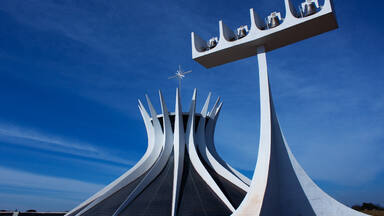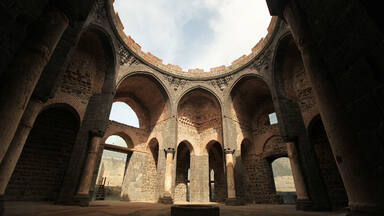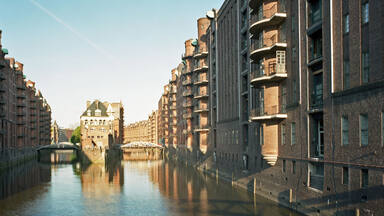Rjukan-Notodden Industrial Heritage Site
Rjukan-Notodden Industrial Heritage Site
Located in a dramatic landscape of mountains, waterfalls and river valleys, the site comprises hydroelectric power plants, transmission lines, factories, transport systems and towns. The complex was established by the Norsk-Hydro Company to manufacture artificial fertilizer from nitrogen in the air. It was built to meet the Western world’s growing demand for agricultural production in the early 20th century. The company towns of Rjukan and Notodden show workers’ accommodation and social institutions linked by rail and ferry to ports where the fertilizer was loaded. The Rjukan-Notodden site manifests an exceptional combination of industrial assets and themes associated to the natural landscape. It stands out as an example of a new global industry in the early 20th century.
Description is available under license CC-BY-SA IGO 3.0
Site du patrimoine industriel de Rjukan-Notodden
Situé au sein d’un paysage spectaculaire de montagnes, de chutes d’eau et de vallées fluviales, le site comprend un ensemble de centrales hydroélectriques, de lignes électriques, d’usines, de réseaux de transport et de villes. Ce complexe fut mis en place par la société Norsk Hydro pour produire des engrais chimiques à partir de l’azote présent dans l’air. Il s’agissait de répondre à la demande croissante du monde occidental en matière de production agricole au début du XXe siècle. Les villes ouvrières de Rjukan et de Notodden présentent des logements ouvriers et des institutions sociales reliés à un réseau ferré et des services de ferrys vers les ports d’embarcation des engrais. Le site de Rjukan-Notodden, qui manifeste une association exceptionnelle d’équipements et de concepts industriels liés au paysage, offre un exemple de nouvelle industrie mondiale au début du XXe siècle.
Description is available under license CC-BY-SA IGO 3.0
موقع التراث الصناعي لمدينتَي روكان ونوتودِن
source: UNESCO/CPE
Description is available under license CC-BY-SA IGO 3.0
尤坎-诺托登工业遗产
source: UNESCO/CPE
Description is available under license CC-BY-SA IGO 3.0
Исторический промышленный комплекс городов Рьюкан и Нутодден
Объект, расположенный в великолепном горном окружении, среди водопадов и речных долин, включает в себя комплекс, состоящий из гидроэлектростанций, линий электропередач, заводов, транспортной инфраструктуры и городов Рьюкан и Нутодден. Комплекс был основан компанией «Норск Гидро» для производства химических удобрений с использованием атмосферного азота. Целью создания комплекса в начале XX века было удовлетворение растущей потребности западных стран в сельскохозяйственной продукции. В городах Рьюкан и Нутодден располагались жилые дома для рабочих и общественные учреждения. Города были связаны железнодорожной сетью и судоходным сообщением (паромами) с портами, где производилась погрузка удобрений. Исторический комплекс городов Рьюкан и Нутодден, для которого характерно гармоничное сочетание природного ландшафта и промышленных объектов, является примером нового типа организаций крупномасштабного промышленного производства в начале XX века.
source: UNESCO/CPE
Description is available under license CC-BY-SA IGO 3.0
Sitio de patrimonio industrial de Rjukan-Notodden
Situado en medio de un espectacular paisaje de montañas, cascadas y valles fluviales, este sitio comprende un conjunto de centrales hidráulicas, tendidos de líneas eléctricas, fábricas, redes de transporte y dos núcleos urbanos. Fue creado por la compañía Norsk Hydro para producir abonos químicos a partir del nitrógeno presente en el aire, a fin de satisfacer la creciente demanda de fertilizantes para la agricultura que se dio en los países occidentales a principios del siglo XX. En las dos ciudades obreras de Rjukan y Notodden se pueden contemplar las viviendas destinadas a los trabajadores, así como los edificios de diversas instituciones sociales, junto con las redes ferroviarias y los servicios de transbordadores que comunicaban a ambas localidades con los puertos de exportación de los fertilizantes. La integración excepcional del diseño del proyecto industrial y de sus equipamientos en el paisaje hace de este sitio un ejemplo notable de la nueva industria internacional de principios del siglo XX.
source: UNESCO/CPE
Description is available under license CC-BY-SA IGO 3.0
リューカンとノトデンの産業遺産群
source: NFUAJ
Rjukan-Notodden industrieel erfgoed
Dit complex is gesticht door de onderneming Norsk-Hydro, om kunstmest te maken uit stikstof in de lucht. Het ligt te midden van een dramatisch landschap van bergen, watervallen en rivierdalen en bestaat uit waterkrachtcentrales, transmissielijnen, fabrieken, transportsystemen en stadjes. Het werd aan het begin van de twintigste eeuw gebouwd om te voldoen aan de groeiende vraag naar landbouwproducten. In de bedrijfssteden Rjukan en Notodden zijn de huizen van de werklieden te zien, sociale instituties, onderling verbonden met rails, en de veerboten naar havens waar de kunstmest werd geladen. De site laat op een bijzondere manier een combinatie zien van industriële complexen en het natuurlijke landschap. Het is een uitmuntend voorbeeld van een nieuwe wereldindustrie aan het begin van de 20e eeuw.
Source: unesco.nl
Outstanding Universal Value
Brief synthesis
Located in a dramatic landscape of mountains, waterfalls and river valleys, the Rjukan-Notodden Industrial Heritage Site comprises a cluster of pioneering hydro-electric power plants, transmission lines, factories, transport systems and towns. The complex was established by the Norsk-Hydro company which brought together results of science and research from Europe and North America to produce hydroelectricity and manufacture artificial fertilizer from nitrogen in the air in response to the Western world’s demand for increased agricultural production in the early 20th century. Rjukan and Notodden company towns incorporated social innovations in workforce provision influenced by international planning ideas which together with innovative transport solutions enabled supply of a new, globally significant product for the world-wide market.
Criterion (ii): Rjukan-Notodden Industrial Heritage Site manifests an exceptional combination of industrial themes and assets tied to the landscape, which exhibit an important exchange on technological development in the early 20th century.
Criterion (iv): The technological ensemble of Rjukan-Notodden comprising dams, tunnels, pipes, power plants, power lines, factory areas and equipment, the company towns, railway lines and ferry service, located in a landscape where the natural topography enabled hydroelectricity to be generated in the necessary large amounts stands out as an example of new global industry in the early 20th century.
Integrity
In general all important remaining physical structures and objects that are testimony to the industrial pioneering period of the production of artificial fertilizer for agriculture in Norway in the early 20th century are within the boundaries of the area which is of adequate size to ensure the complete representation of the features and processes which convey the property's significance. The physical fabric of the property and its significant features are generally in a good condition. The property is not suffering from adverse effects and neglect.
Authenticity
The property incorporates buildings, structures and remains which convey credibly and truthfully its Outstanding Universal Value as a pioneering industrial enterprise for the production of artificial fertilizer in the early 20th century.
Protection and management requirements
The property is protected under the Cultural Heritage Act 1978, amended 2009 and the Planning & Building Act 2009, amended 2012. All specified items will be protected by the Cultural Heritage Act or specific heritage provisions of the Planning & Building Act by June 2015. The buffer zone is protected under the Cultural Heritage Act and zoning controls pursuant to the Planning & Building Act.
A ‘Declaration of Intent’ has been signed by the State Party and relevant county council and municipalities undertaking to protect the Outstanding Universal Value and the buffer zone. A provisional World Heritage Council comprising representatives from the Directorate for Cultural Heritage, the county authority, municipalities and the Norwegian Industrial Workers Museum has been set up to deliver a management structure for the property. A World Heritage Coordinator with responsibility for the whole area will be appointed. The Management Plan 2014-2019 includes an Action Plan with goals and actions for conservation, strengthening of Outstanding Universal Value, competence building and research, information & presentation, and visitor management and will include a risk preparedness strategy.



